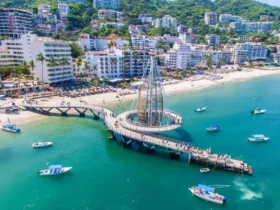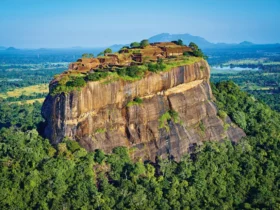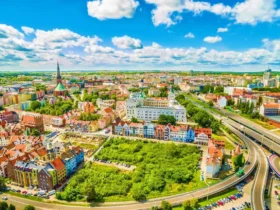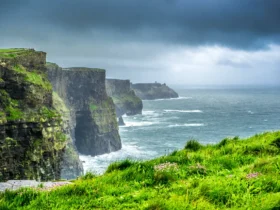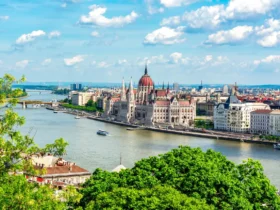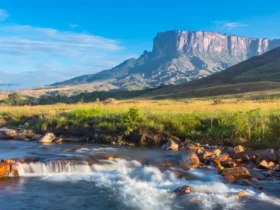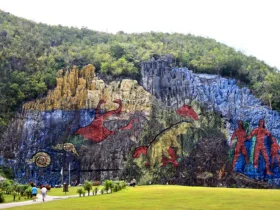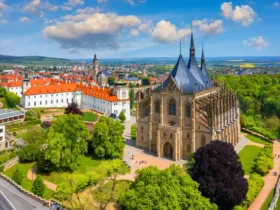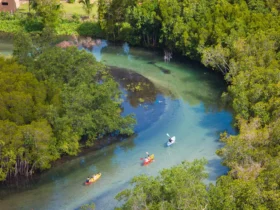Fly Geyser is indeed a unique geothermal feature located in the Hualapai Flat of the Black Rock Desert in Nevada, United States.
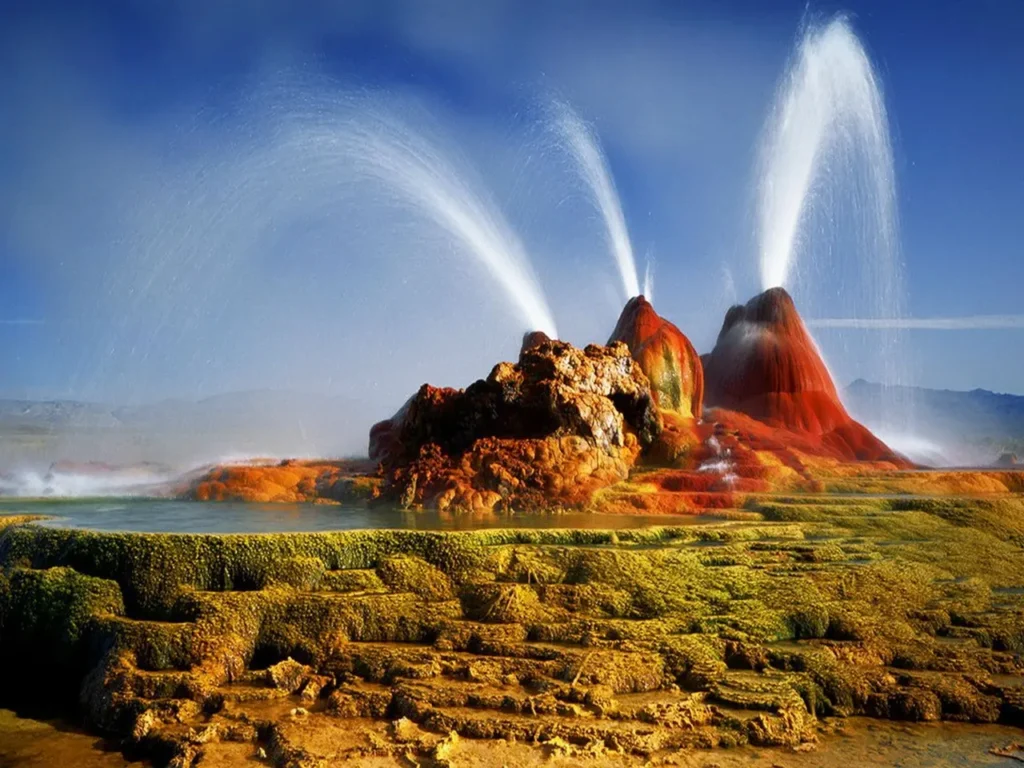
Fly Geyser is a small geothermal geyser that is known for its vibrant colors and unique formations. It was accidentally created in 1964 during a geothermal well drilling that hit a geothermal pocket. Over the years, minerals from the geothermal water have accumulated, resulting in the formation of the colorful and constantly growing geyser.
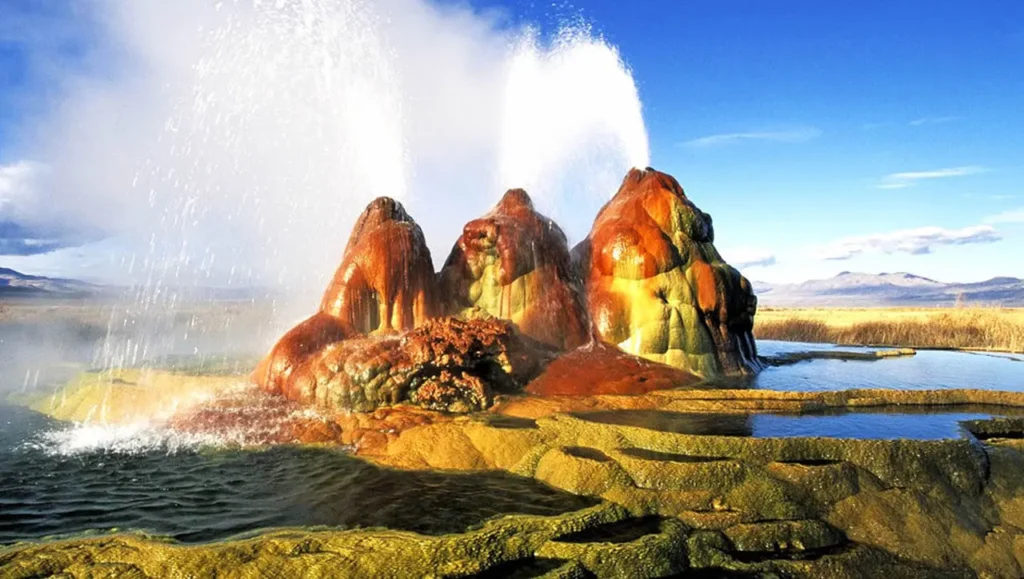
The geyser consists of several terraced mineral formations that continually release scalding hot water, reaching a height of up to 5 feet (1.5 meters) in the air. The water is rich in dissolved minerals, which gives the geyser its distinctive red, green, and orange hues. The terraces surrounding the geyser are made up of calcium carbonate and other minerals that have accumulated over time.
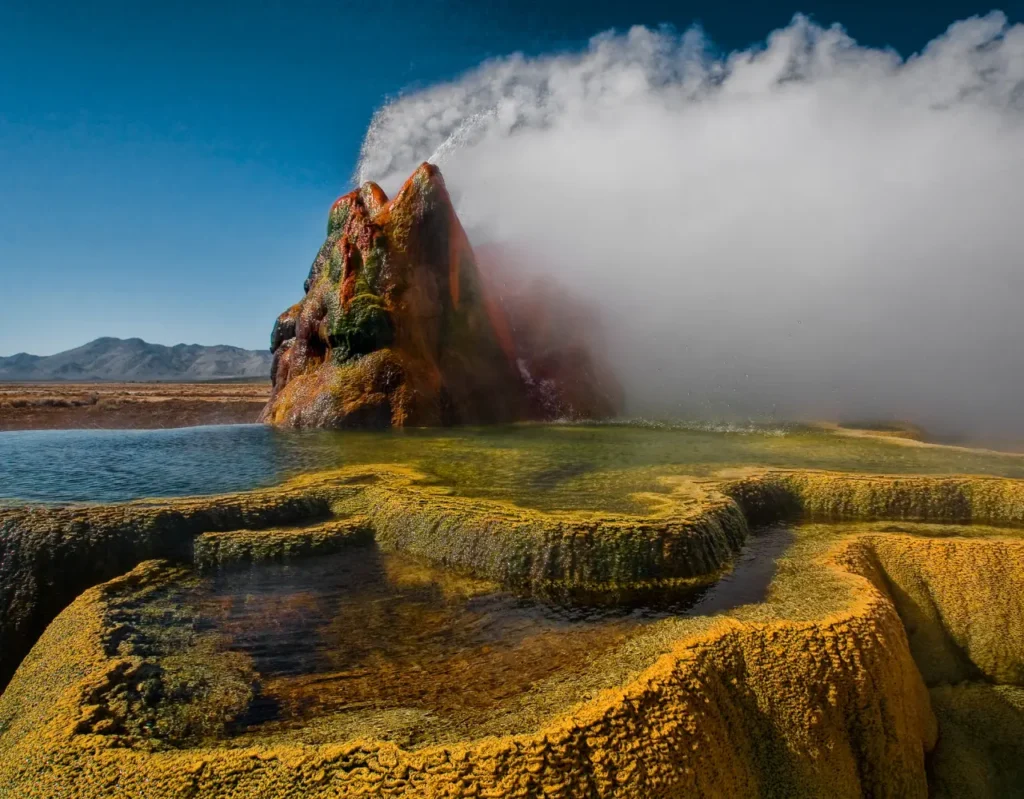
Fly Geyser is situated on private land, owned by the Fly Ranch. Access to the geyser is restricted to protect the delicate ecosystem and ensure its preservation. It is not open to public visitation or tours. However, it has gained popularity due to its striking appearance and unique geological features.
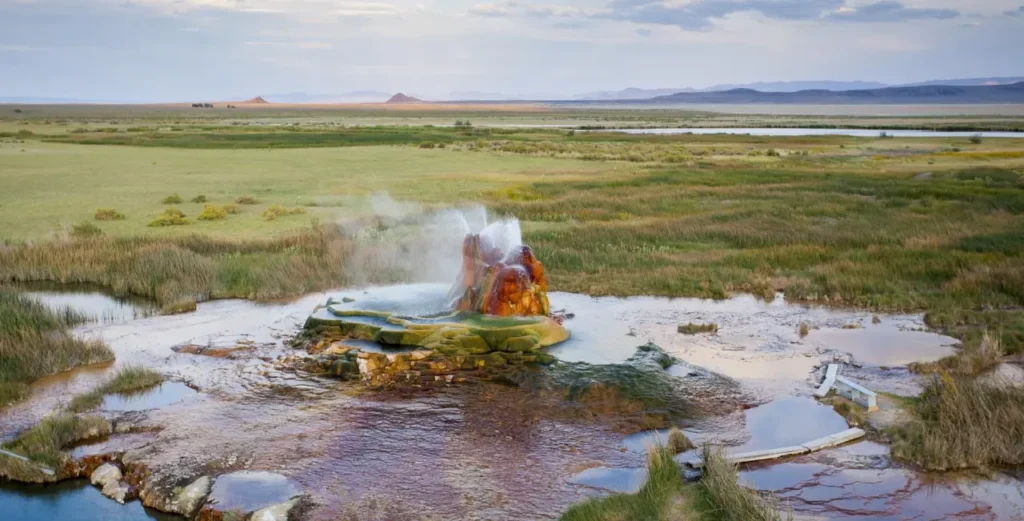
The geyser continues to evolve and change over time as minerals accumulate and new formations emerge. Its remote location and limited access contribute to its mystique and allure. While you may not be able to visit Fly Geyser directly, there are often stunning photographs and videos available online that showcase its beauty and otherworldly appearance.
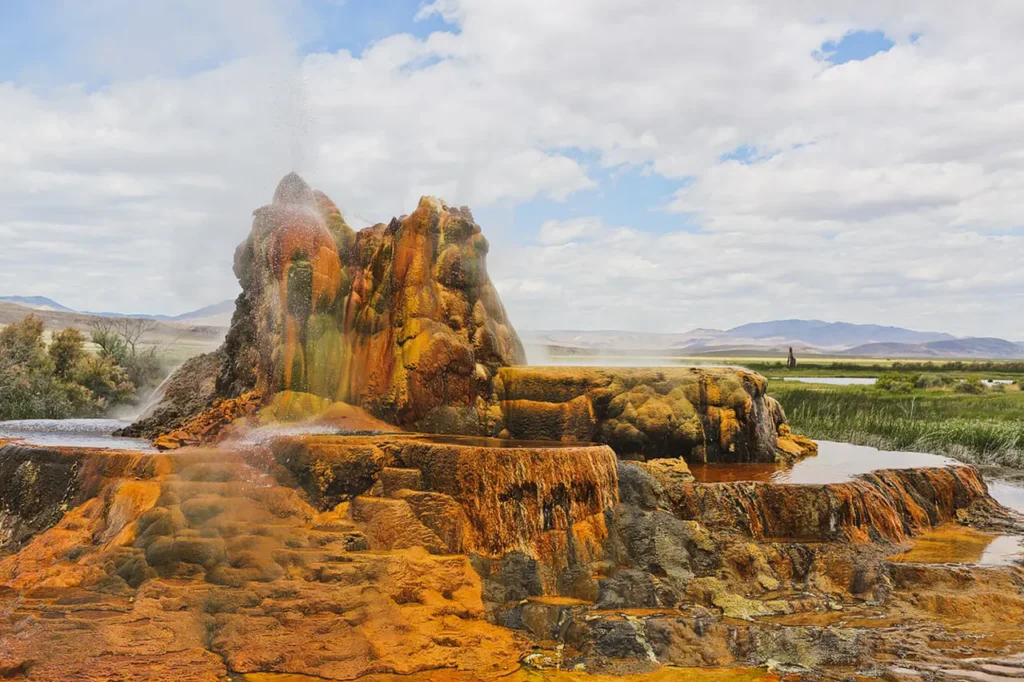
Formation: Fly Geyser was formed as a result of a geothermal drilling project in 1964. The well was not properly capped, which led to the continuous flow of geothermally heated water. Over time, the minerals in the water, such as calcium carbonate and other dissolved solids, built up and created the unique terraced formations we see today.
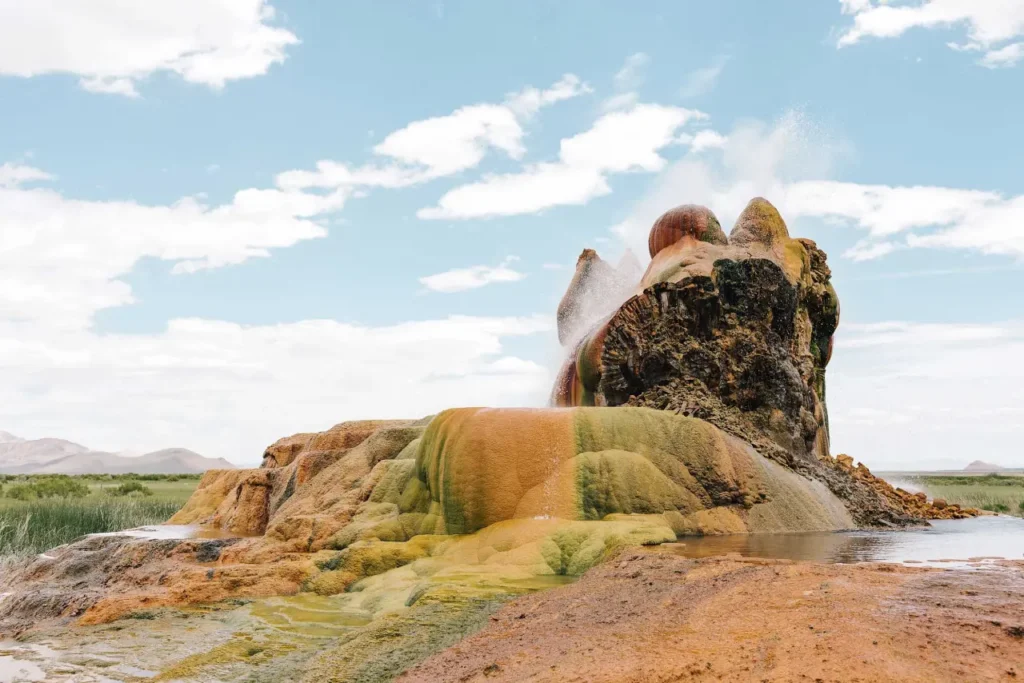
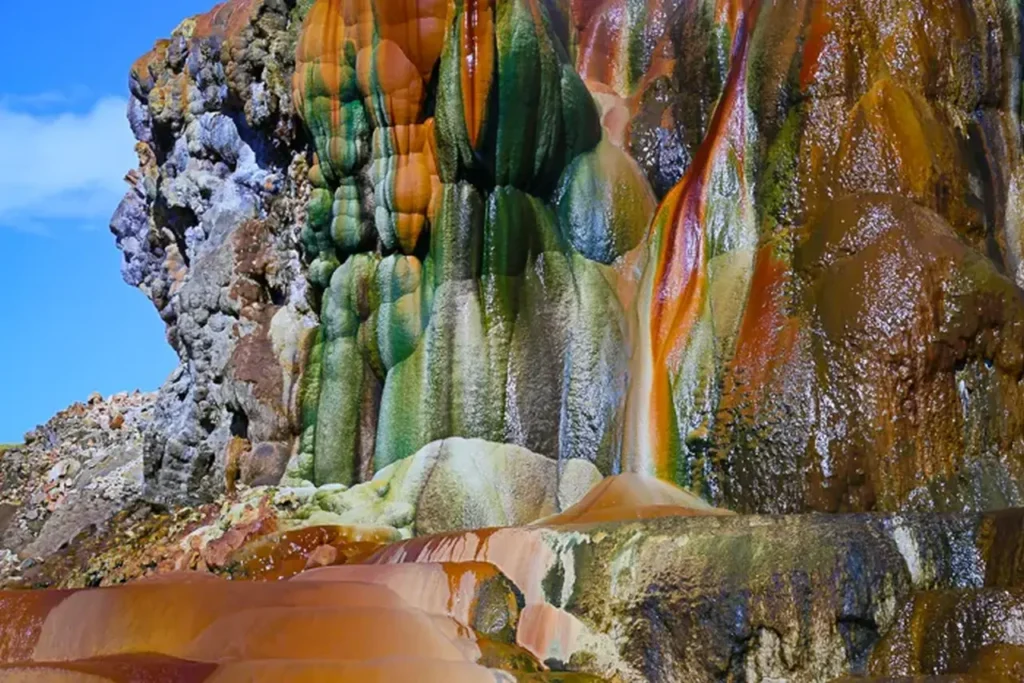
Colors: The vibrant colors of Fly Geyser are a result of the presence of thermophilic algae. These heat-loving microorganisms thrive in the hot water, creating vivid green and red hues on the surface of the geyser. The contrasting colors against the white mineral deposits make it a visually stunning sight.
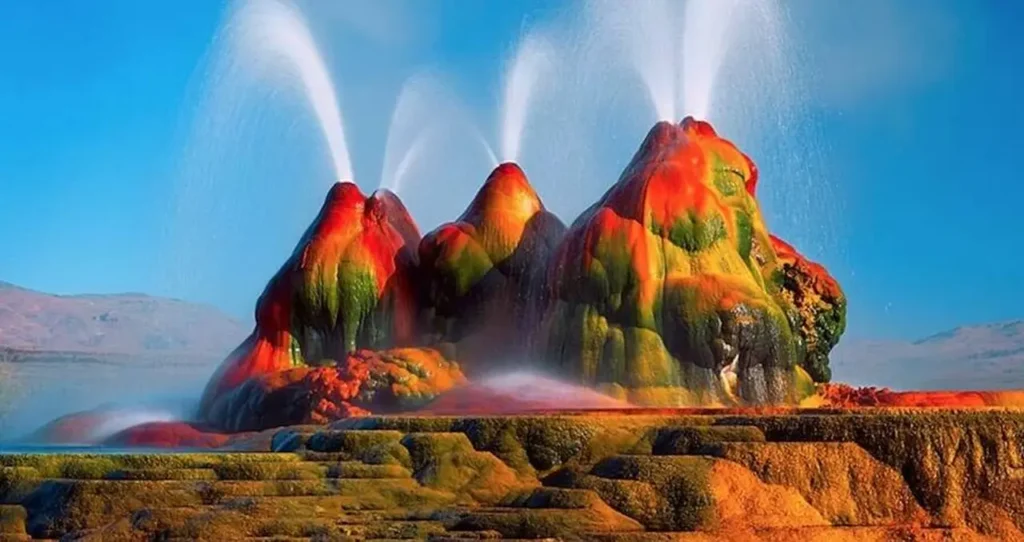
Growth: Fly Geyser is an actively growing geyser. As the mineral-rich water continues to flow and deposit minerals, the geyser’s formations gradually increase in size. The terraces are constantly changing and evolving, giving the geyser a dynamic and ever-changing appearance.
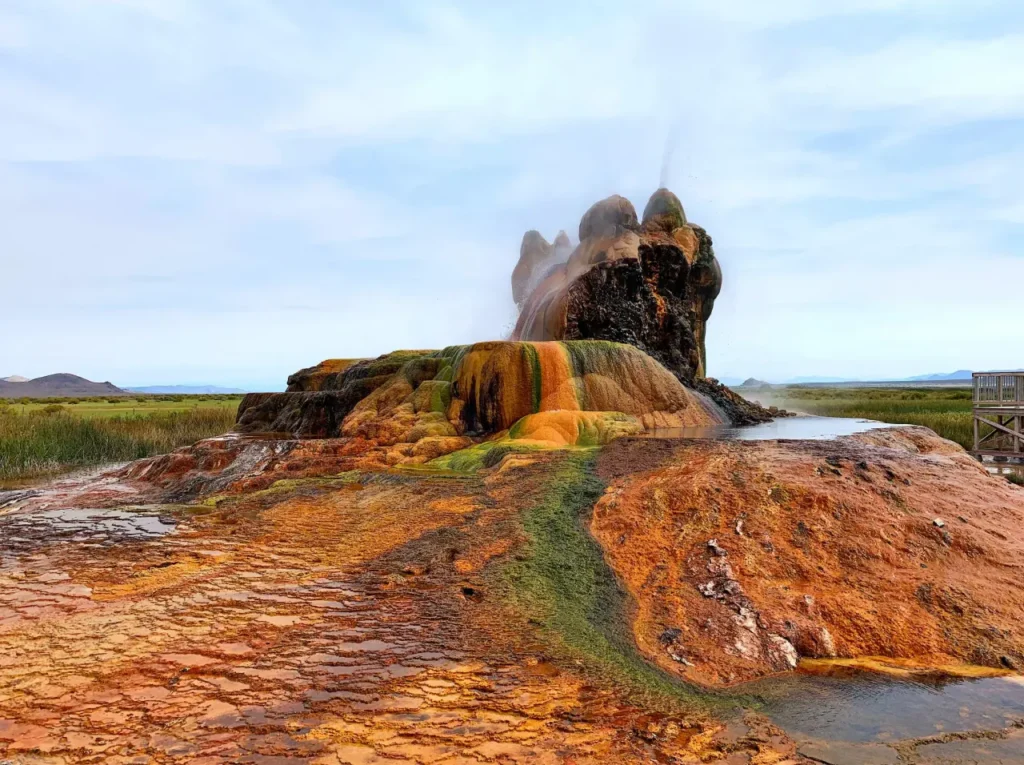
Restricted Access: Fly Geyser is located on private land, owned by the Fly Ranch. Access to the geyser is limited, and public visitation is not permitted. This is to protect the delicate ecosystem and preserve the unique geological features of the geyser.
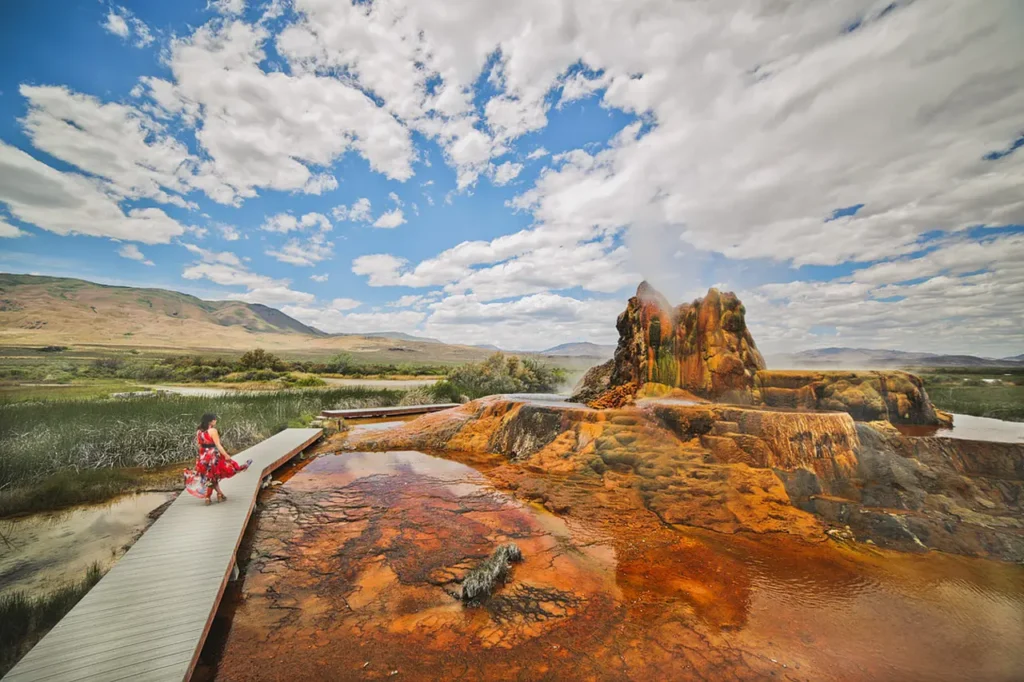
Fly Ranch: The Fly Ranch, where Fly Geyser is located, is a privately owned property that spans over 3,800 acres (15.4 square kilometers). It is situated in the remote and arid landscape of the Black Rock Desert in Nevada. The area is known for its unique geothermal features and natural beauty.
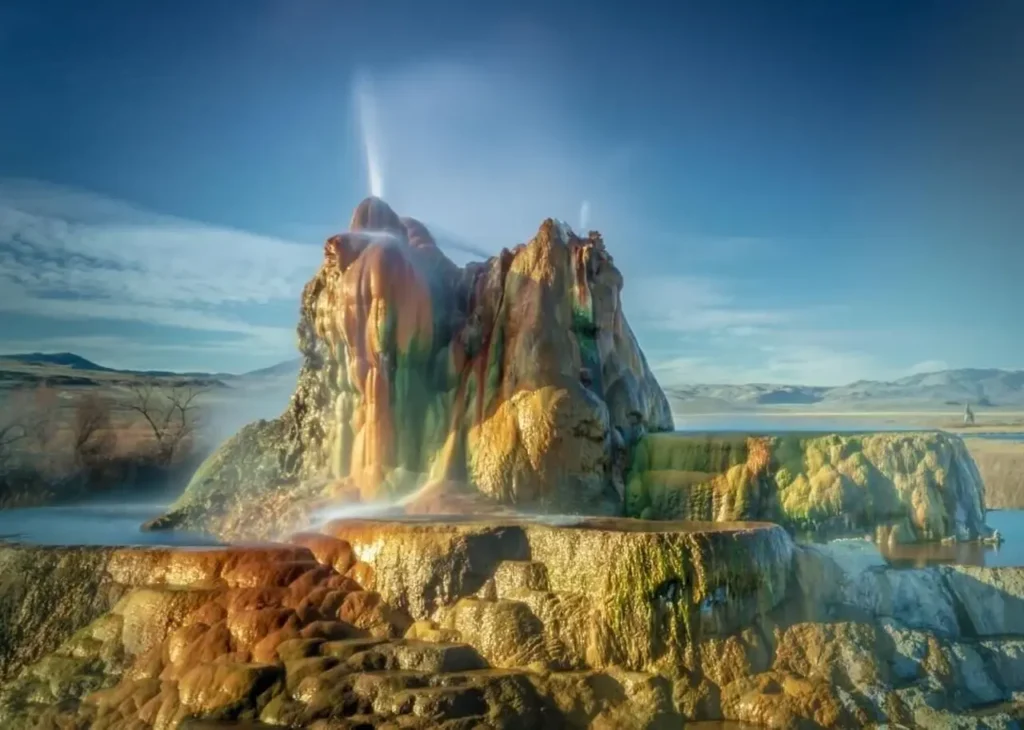
Conservation Efforts: The owners of Fly Ranch have taken measures to protect and conserve the geyser and its surroundings. They have implemented sustainable land management practices to preserve the fragile ecosystem and minimize human impact on the area.
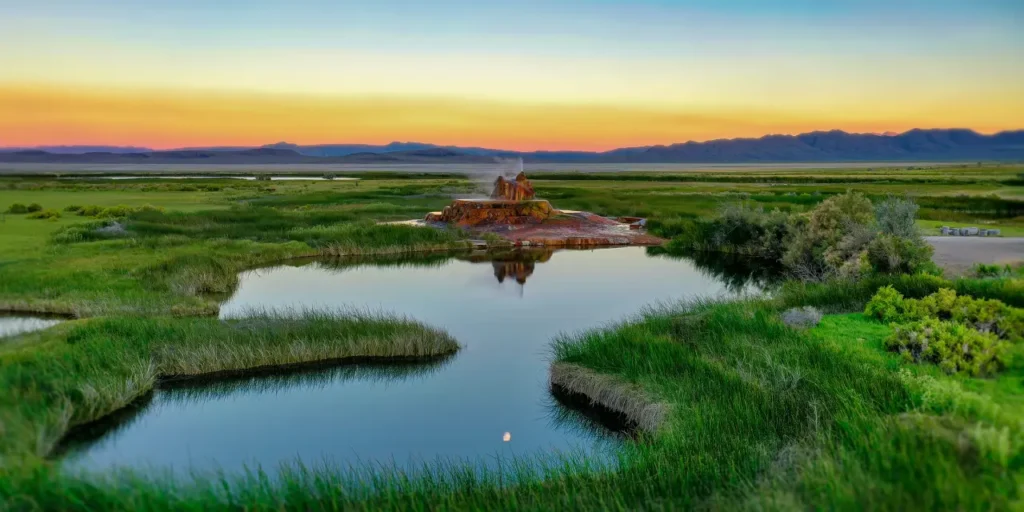
While access to Fly Geyser itself is restricted, the site’s uniqueness and beauty have attracted attention from photography enthusiasts and nature lovers. Stunning photographs and videos of the geyser can be found online, showcasing its captivating colors and mesmerizing formations.
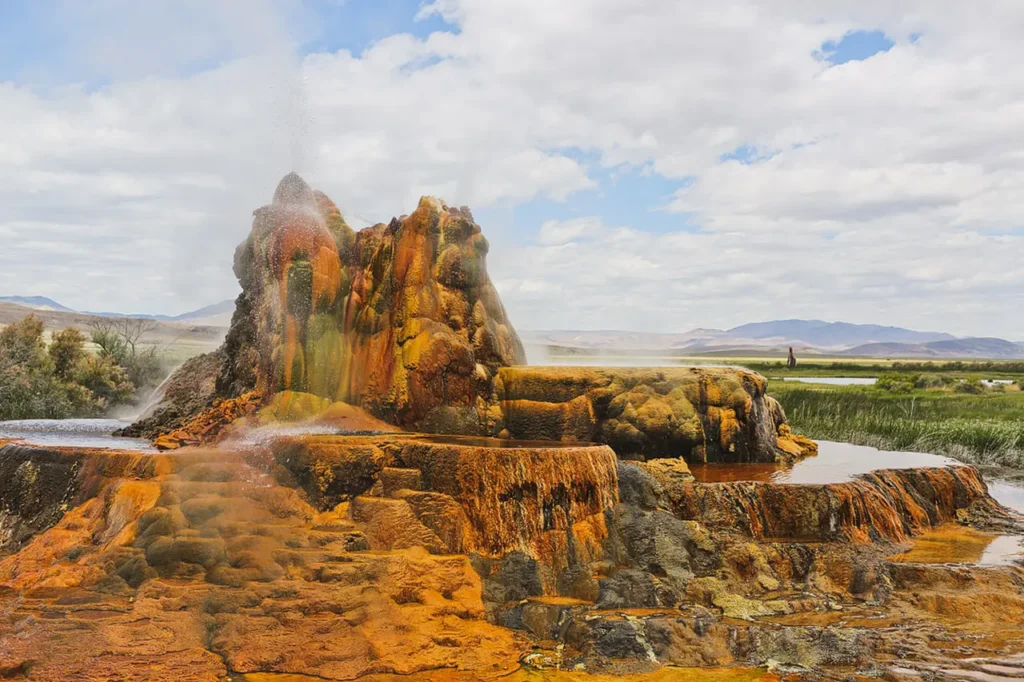
The best time to visit the Fly Geyser is during the spring and fall seasons. Here’s a breakdown of the seasons and their characteristics:
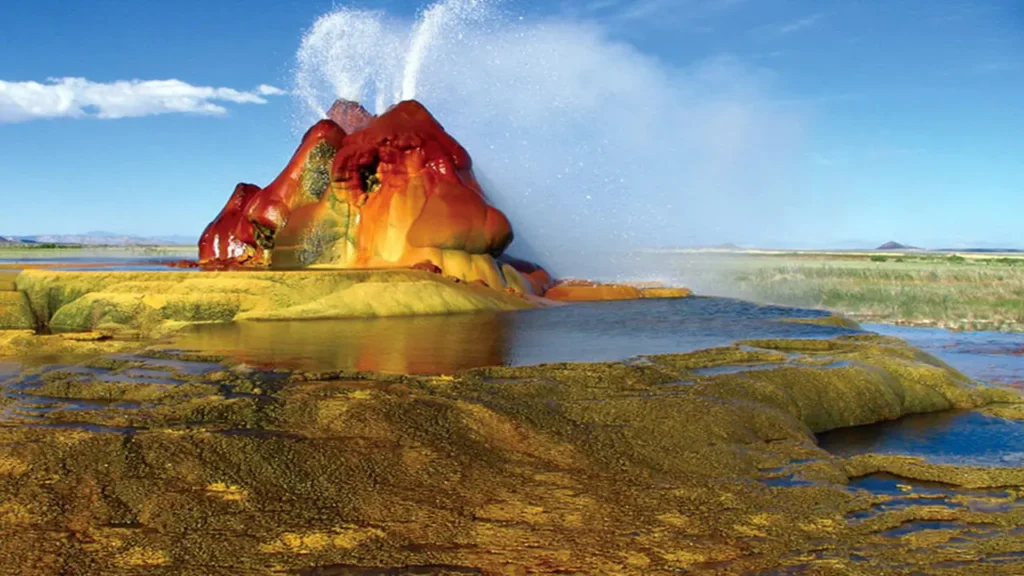
Spring (March to May): Springtime in this region brings milder temperatures compared to the scorching summer months. The weather is generally pleasant, with average daytime temperatures ranging from 60°F (15°C) to 80°F (27°C). Spring also brings the possibility of wildflowers blooming, adding a splash of color to the desert landscape. Keep in mind that springtime can also bring occasional rain showers, so it’s advisable to check the weather forecast and pack appropriate rain gear.
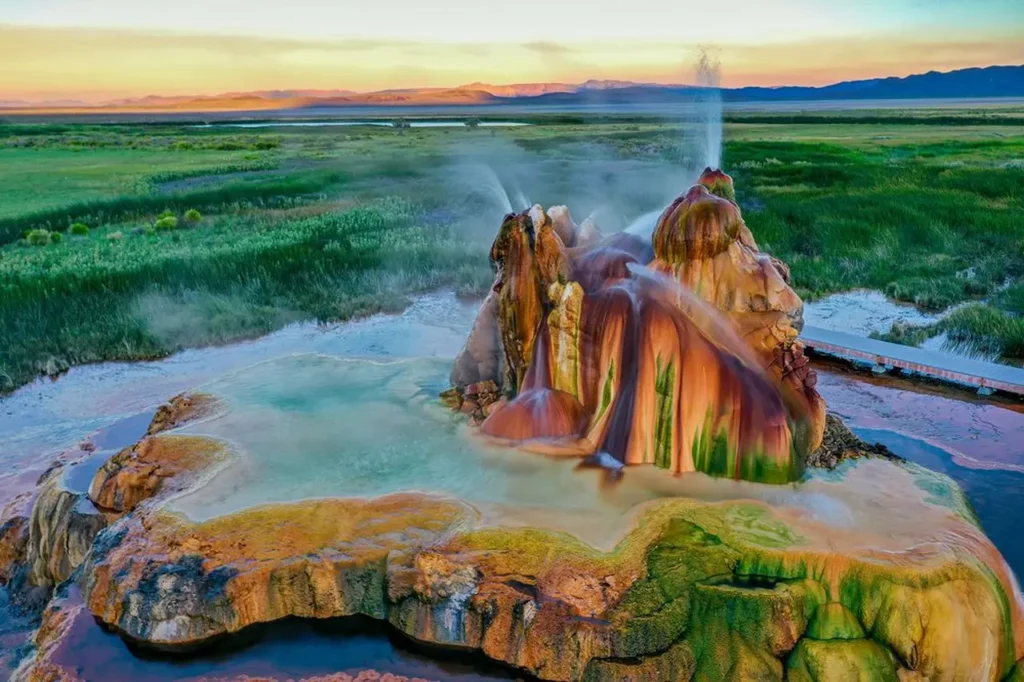
Fall (September to November): Fall is another favorable time to visit the area. The weather is typically mild, with comfortable temperatures during the day and cooler evenings. Average temperatures range from 60°F (15°C) to 80°F (27°C). Fall is also a popular season for photography, as the changing foliage and the interplay of light and shadow create beautiful scenic opportunities.
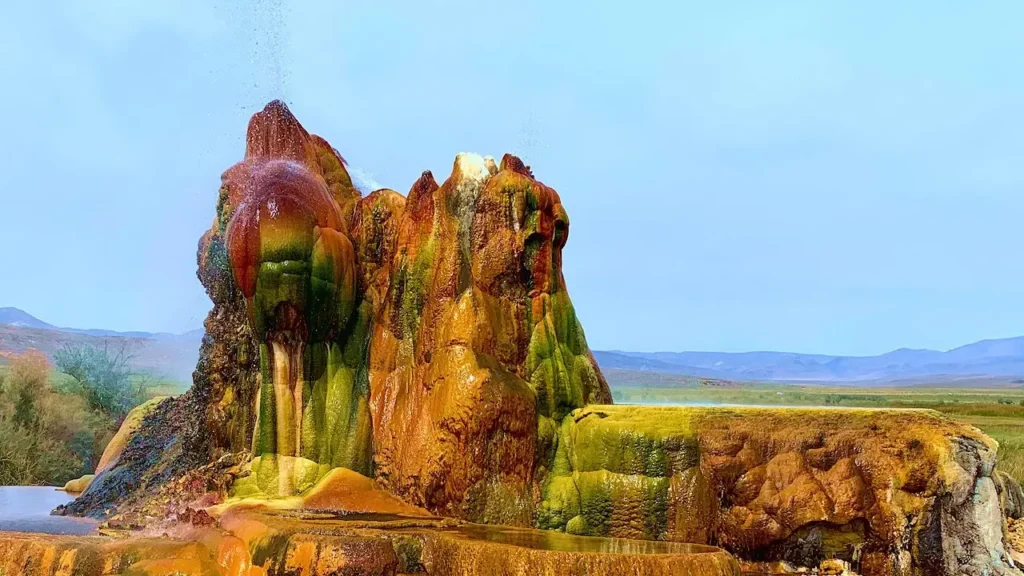
It’s important to note that this region experiences extreme temperatures during the summer and winter months. Summers can be scorching with temperatures exceeding 100°F (38°C), while winters can be cold with temperatures dropping below freezing. Traveling during these seasons may not be comfortable or safe for outdoor activities.
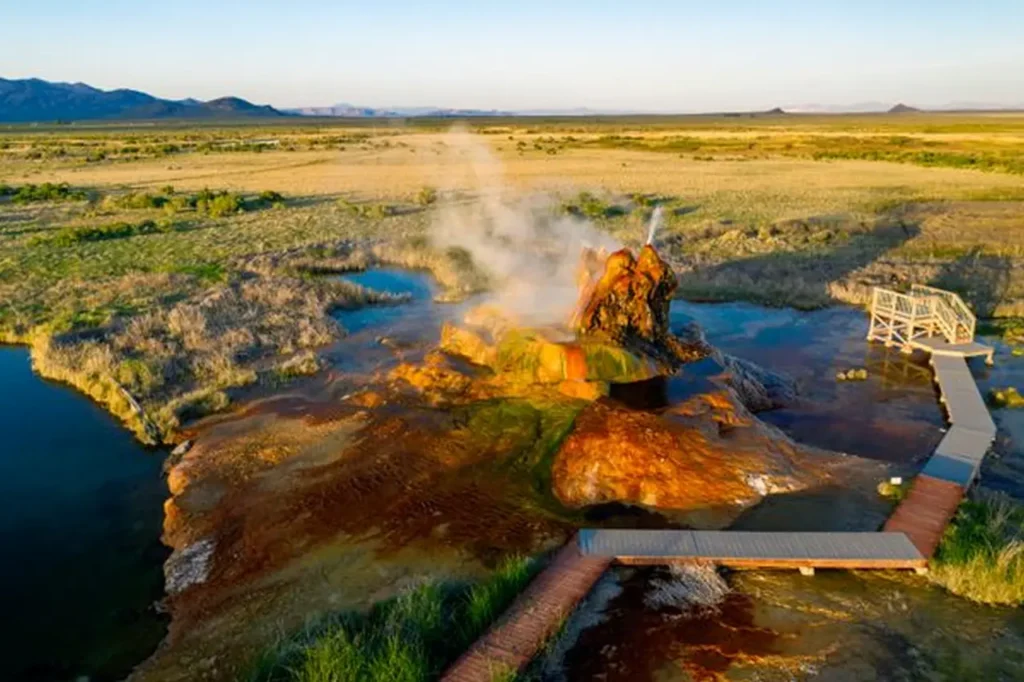
Additionally, it’s crucial to consider any specific events or activities that may take place in the area, such as the Burning Man festival, as they can significantly impact accessibility and accommodation availability. Checking local event calendars and making reservations in advance, if necessary, is recommended.
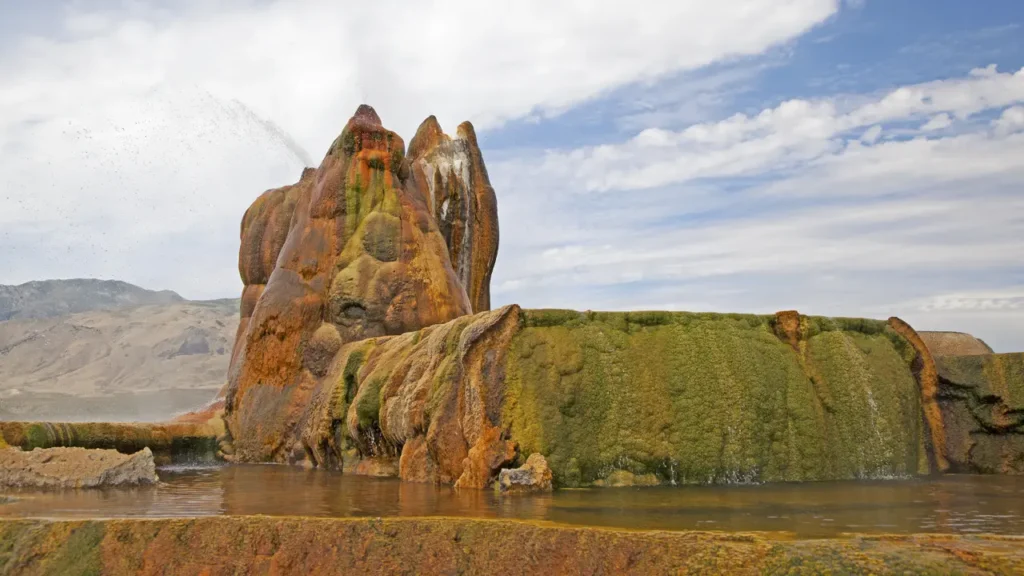
Always check the latest weather forecasts and road conditions before your trip and be prepared for changes in weather patterns, as the desert environment can be unpredictable.
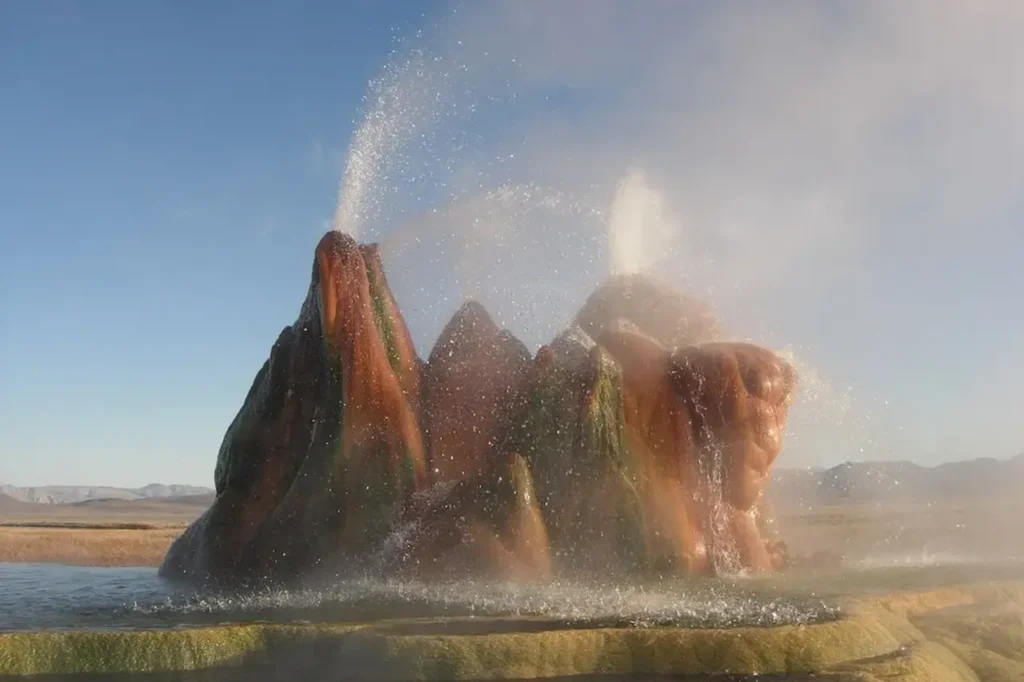
In summary, the above article has provided the natural wonder recognized by UNESCO – Fly Geyser . Hope that this article is useful for readers. Please visit our website for more interesting natural wonders!
